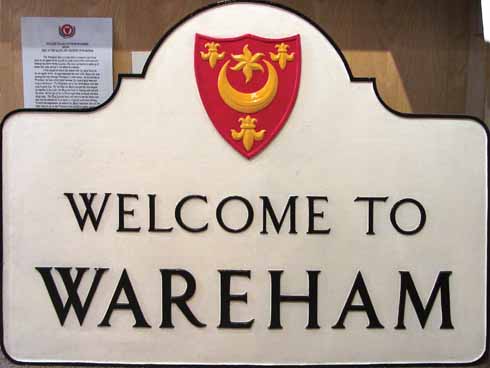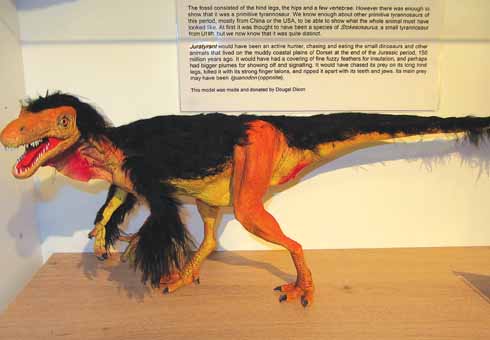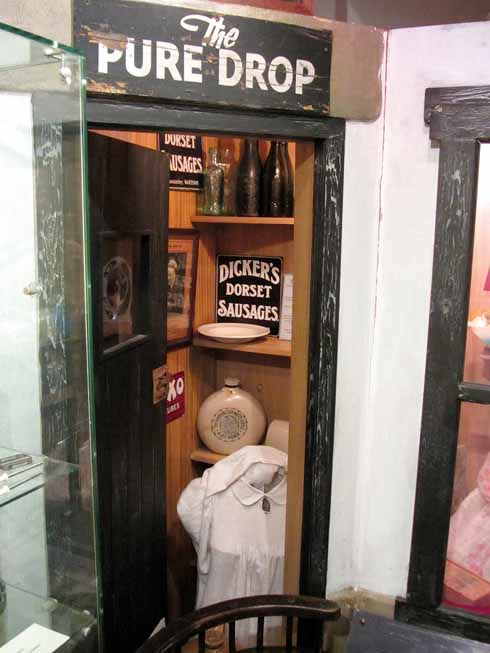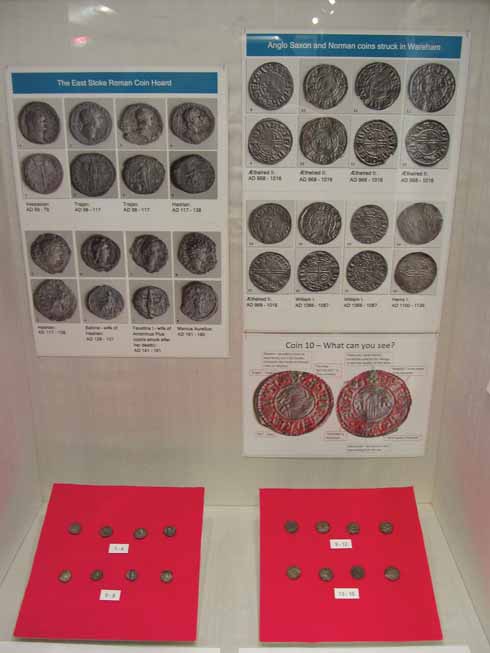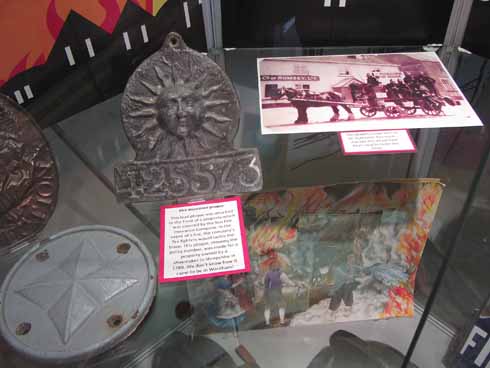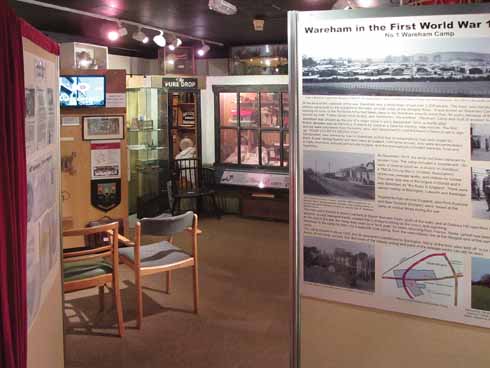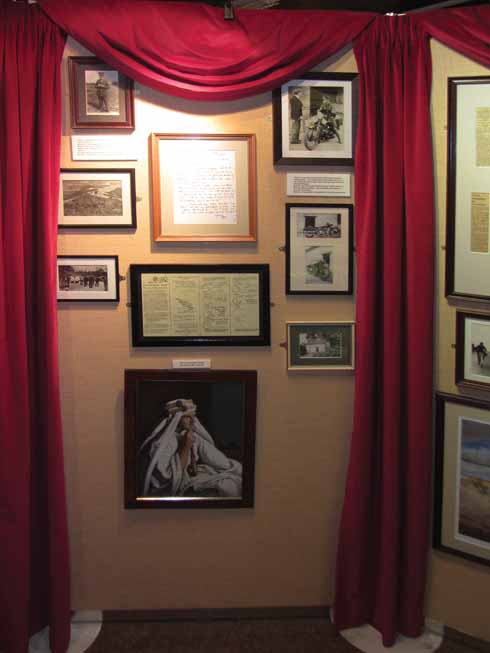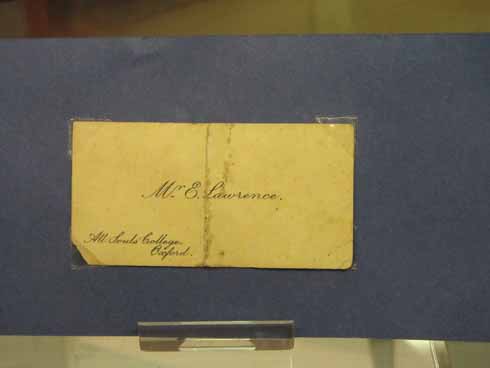From dinosaurs to saxons – Wareham museum
Brian Cormack ges behind the scenes at Purbeck's 'overlooked treasure': Wareham Museum
Published in September ’15
Aside from the obvious there’s something appreciably ‘Wareham’ about Wareham Museum. It goes about the business of telling the tale of the town and the surrounding area with little fuss or brouhaha, collecting in one place various elements of a story that’s as much as 220 million years old.
Truth be told, it’s something of an overlooked treasure in Purbeck’s stellar roll call of attractions, but a treasure it is nonetheless. Volunteer-run – as it always has been – it takes at least 30 people to make it work, most of them offering all manner of specialisms as well as simple enthusiasm for the town and its museum.
‘Wareham is a very important place for all sorts of reasons, not least because it has the most complete set of Saxon town defences in England – and that’s a fact,’ says curator Ben Buxton. ‘The thing is it’s not often put across like that, but when you tell people in those terms they are immediately interested.
‘Then you tell them why. It’s because Wareham basically stopped growing, it’s like it is frozen in time. Whereas most fortified Saxons towns continued to expand and their walls were flattened, because the river was silting up and Wareham was superceded as a port by Poole, Wareham basically remained contained within the walls until after the World War 1. If anything it shrank – a visitor to Wareham in the 16th century records it as being ‘all fallen down’, so we have the founding of Poole as a port, most likely by Wareham merchants concerned about losing business, to thank for preserving Saxon Wareham.’
The town’s defences were built to protect its townspeople, monastery and St Aldhelm’s nunnery from the Vikings. Undeterred, the Danes sacked the town anyway, occupying it for the winter of 876, until Alfred the Great returned with an army and made a deal with the invaders. Fittingly, the museum’s sizeable collection of Saxon coins that were minted in Wareham but recovered in Scandinavia – irrefutable evidence of the Danegeld paid to the Vikings to leave the town alone – has gone on show this year.
The Normans also recognised Wareham’s importance and rebuilt its castle between Pound Lane and the River Frome in stone. A display in the museum shows the castle site with an aerial photograph demonstrating how the Saxon grid system breaks down around the castle with the curved Pound Lane and Trinity Lane thought to follow the line of the castle bailey.
‘The previous owner of Castle House excavated the stone foundations, which are 23 feet thick,’ says Ben, ‘so the Normans certainly saw the strategic importance of Wareham. However, they also built up Corfe Castle and made it much showier so in time Wareham Castle was abandoned – it was all about showing off in those days.’
The original collection from which the museum has grown was assembled by Harry Broughton, a former town mayor, who from around 1960 until 1971 used to show it in his front room at The Manse in North Street. The town council took it on and opened a museum in 1974 on St John’s Hill where Hemsbach Court now stands, before moving again in 1984 to its current home in the Town Hall extension after the council decamped to newly built offices at Westport House. Most recently, in 1998 with Lottery funding the museum was able to expand its displays into the former Tourist Information Centre.
Accredited with Arts Council England – a process that occupies months of Ben’s time every four years – Wareham Museum meets the various standards required for it to apply for grants. Such funding is the lifeblood of the museum enabling improvements such as the new Jurassic Coast display, which includes the striking scale model of a Juratyrant first found at Kimmeridge in 1984. The model was made and donated by Wareham-based dinosaur specialist and science writer Dougal Dixon.
Last year the museum did a lot of work on Wareham in World War 1, reproducing some of its historic photo collection as postcards, most notably a bicycle brigade arraigned in South Street and a pontoon bridge built across the Frome to the side of the Granary, when it was still in use as a grain store. Current fundraising is focussed on a new display to open next year about the famous Saxon sword recovered from the Frome at Wareham in 1927 and held at Dorset County Museum. Its significance derives from an inscription on its antler handle of a name that begins Aethel, a name only used by royalty. There are also plans to display finds from the Bestwall Quarry Archaeological Project, which ran from 1992 to 2005.
Of course, at the heart of the museum and the genesis of Harry Broughton’s original collection are the documents, photos and artefacts that relate to Lawrence of Arabia, TE Shaw. In the news again this year at the 80th anniversary of his death in Wool Military Hospital on Bovington Camp following a motorcycle accident near his home at Clouds Hill, Lawrence continues to intrigue and captivate.
‘I think that collection is Harry Broughton’s real legacy,’ suggests Ben. ‘We get a lot of visitors who want to know about Lawrence and the few personal items we have fascinate them. His life is a trail of mystery so I don’t think the interest will ever let up, they’ll always be writing books about Lawrence.’
Perhaps that helps explain why the Lawrence material feels least like it belongs to Wareham – ironic really given it’s the very reason Harry Broughton began his collection in the first place. The display remains a major part of the museum and the tantalising glimpses of Lawrence afforded by the hallowed letters, cuttings and ephemera on show here are sure to do just that for years to come.
INFORMATION
Wareham Town Museum, East Street, Wareham 01929 553448
Mon – Sat: 10.00 – 4.00, from Good Friday until the end of October
❱ www.wtm.org.uk info@wtm.org.uk
